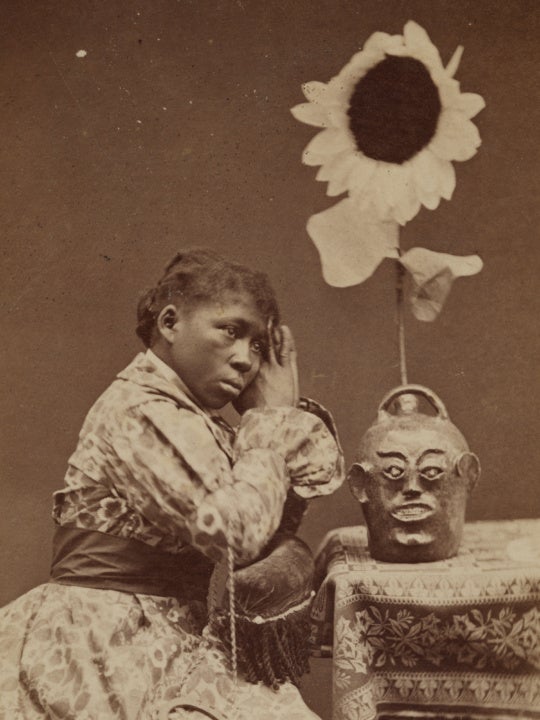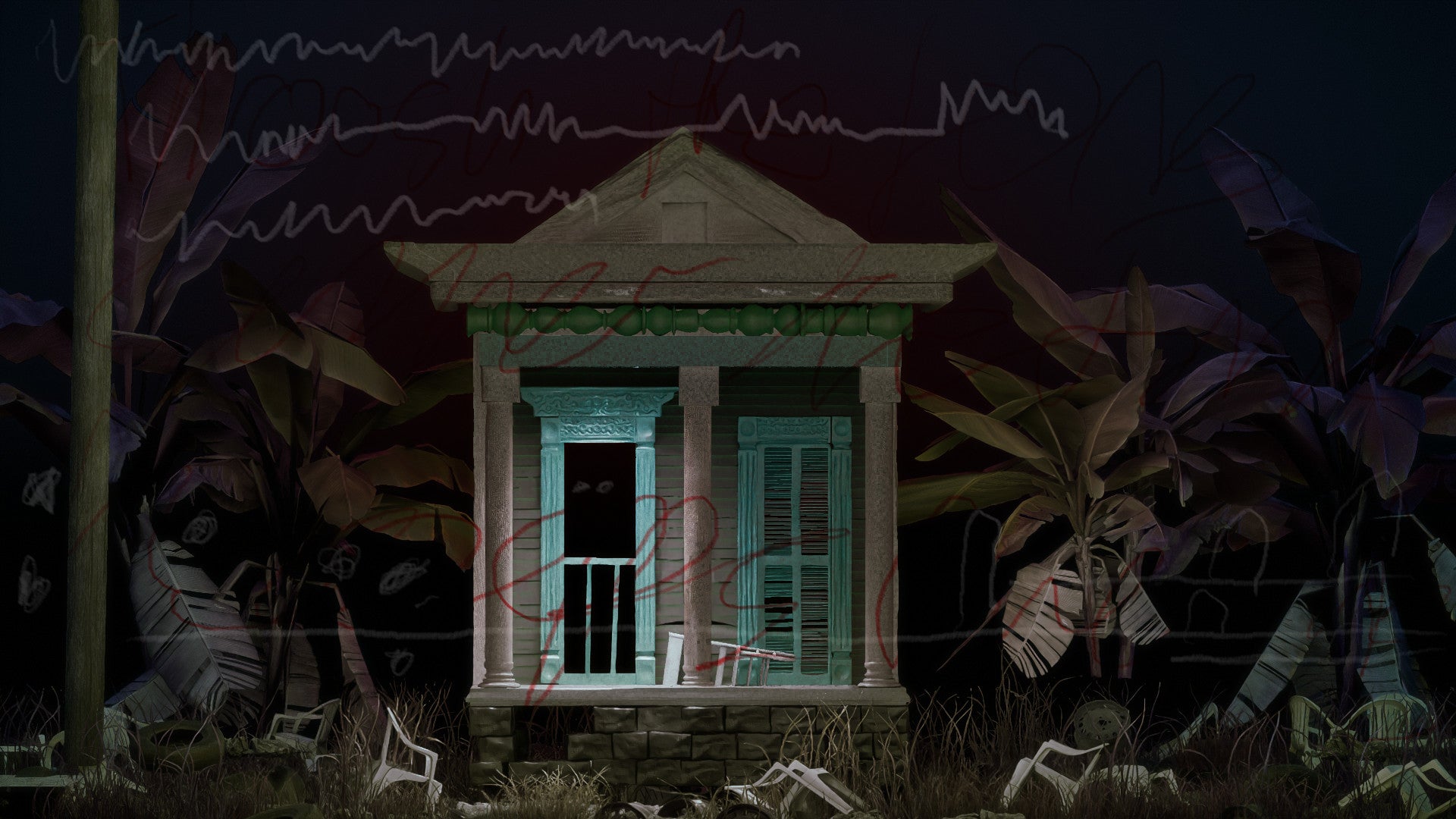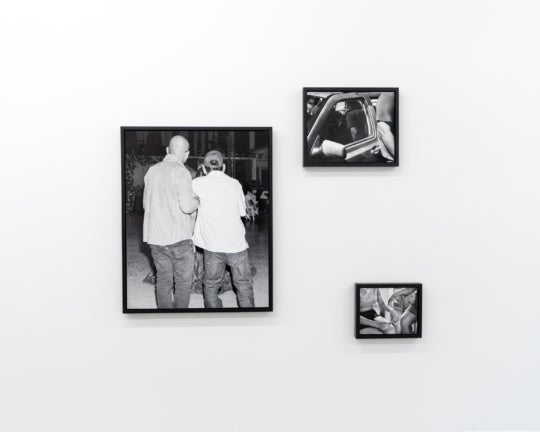
Mario Petrirena works primarily with solid substances in his sculpture, collages, assemblages, installations and ceramics, but his other material — memory — seems more like a liquid. Memory takes the shape of whatever container he uses to symbolize it, but it also seems to gush out of these containers, uncontainable and uncontrollable, always spilling out and mixing with other things, leaving traces of itself wherever it goes. Memories upon memories is the name of a sculptural work in the artist’s retrospective “The Distance Between,” on view at the Museum of Contemporary Art of Georgia through April 29, but it could just as easily be the title of the entire exhibition.
Even in the retrospective’s earliest work, a pair of sculptural figures from 1985, Petrirena is already dealing with memory. There’s angel of death, in which a shard of glass is stuck in a bleeding bust composed of small, sculpted faces, and its companion piece, how could they, in which bleeding faces cover a similarly shaped bust with scrawled text. The two figures are competently executed and aesthetically satisfying, but in these early pieces the metaphor for a painful and somehow crowded memory seems almost too literal, too obvious, too earnest. In later, more mature work, Petrirena’s use of metaphor becomes more intriguingly inconclusive; indeed, the method and mystery of metaphor seem almost to become the subject itself.

Petrirena was born in Cuba and raised there during the political upheaval of the 1960s. At the age of 8, he was one of 14,000 children evacuated to America during Operation Pedro Pan. It’s not surprising then that memory emerges as such a crucial theme. Even without such upheaval, childhood can seem like a distant world when remembered from the vantage point of adulthood, but for Petrirena that sense of unbridgeable distance is literal.

But there are few discernible autobiographical references in Petrirena’s work; one doesn’t become acquainted with a particular memory or narrative event from the artist’s past, but the uncontainable nature, the busy chatter and the palimpsest of memory are evident everywhere. In a 2005 collage, the forgetting day, a child’s portrait is blocked out by a an image of a cloud-filled sky. This theme is repeated more abstractly (and more satisfyingly) in a series of beautiful untitled collages from 2015-16, in which images cut in abstract shapes are layered to form surreal, interlocking, otherworldly landscapes. Two oblong vessels, sorrows beyond measure from 2011 and anchored in gratitude from 2014, are easily the most beautiful objects in the show. Their edges are beautifully speckled with branchlike rivulets of glaze, the interior flat surface painted with evocative, hypnotically repetitive patterns tally marks in the first piece and praying hands in the second.

A funereal tone pervades the galleries, untraceable to any one object, but most easily identifiable in a series of abstract headstones made throughout his career and here placed together. Even when the work doesn’t reference specific tragedy or trauma, the suggested simultaneous omnipresence and irretrievability of the past still strike a deeply melancholy note.
Reaching out to viewers beyond the confines of the typical gallery space has been a parallel goal for Petrirena — perhaps to establish a sense of connectedness and permanence in his adopted country. At MOCA, a small side gallery is devoted to this curious aspect of his career. With the giving tree, begun in 2011, Petrirena occasionally hides little works of art and gifts on a tree near his home in Decatur, connecting his process with an anonymous but observant stranger (an act reminiscent of the elusive outsider Boo Radley’s early relationship with the lead characters in To Kill a Mockingbird). For 50 on the island, the artist left 50 copies of a catalogue hidden around Manhattan, and for Postcard Project at Hartsfield-Jackson International Airport, visitors were invited to take a Petrirena-created postcard.

In the large, culminating 2017 installation the inaudible voice of it all, flowers are piled in a glass, coffinlike container surrounded by found objects, often personal items of everyday use. Here, as throughout the exhibition, one senses the artist journeying through the troubled sea of his personal memories, finding them inconclusive, hopelessly enmeshed together, their voices inaudible or incomprehensible. His work emanates from the private realm of individual remembrance, but it arrives at what’s universally shared: the inscrutability of our ever-accumulating memories and then the final erasure of death.
Andrew Alexander is an Atlanta-based critic who covers visual art, dance, and theater.




